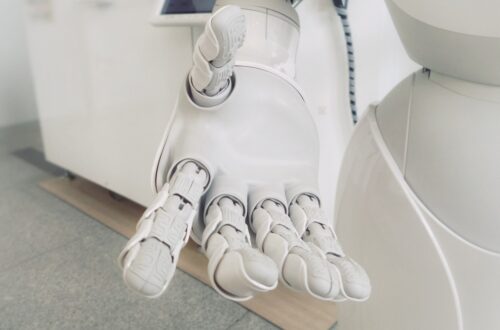How Robots and Artificial Intelligence Transform Food Production
The modern world is experiencing a transformative shift in the way we produce food. Robots and artificial intelligence are no longer science fiction, but robust allies in food production. These advancements are reshaping the industry, making it more efficient, sustainable, and profitable.
Table of Contents
1. Introduction to AI and Robotics in Agriculture(#introduction)
2. Robotic Applications in the Field(#field)
3. AI: The Brain Behind the Operation(#ai)
4. Benefits of AI and Robotics(#benefits)
5. Challenges and Solutions(#challenges)
6. Case Study: AI and Robotics in Action(#case-study)
7. Looking to the Future(#future)
8. Conclusion(#conclusion)
Introduction to AI and Robotics in Agriculture
Agriculture, one of the world’s oldest industries, is undergoing a technological revolution. Robots and AI are now integral components in the production of food. These technologies, once considered futuristic, are now a reality, aiding farmers in improving productivity and sustainability.
Robotic Applications in the Field
Robots have a variety of applications in agriculture, such as:
1. Harvesting and Picking: Robots, equipped with machine vision, can identify when crops are ripe and delicately pick them.
2. Weeding and Planting: Robots can precisely identify and remove weeds or plant seeds, reducing the need for harmful herbicides.
3. Crop Monitoring: Drones can monitor crop health from above, identifying areas that need attention.
AI: The Brain Behind the Operation
Artificial Intelligence is the brain behind these robotic operations. AI systems can analyze vast amounts of data, learn patterns, make decisions, and improve over time. Machine learning, a subset of AI, powers the robots’ ability to identify ripe crops, distinguish between crops and weeds, and monitor crop health.
Benefits of AI and Robotics
The integration of robots and AI brings numerous benefits:
* Increased Productivity: Robots can work around the clock, boosting productivity.
* Enhanced Precision: AI enables precise operations, reducing waste.
* Improved Sustainability: Precision farming techniques can reduce the use of water and chemicals.
Challenges and Solutions
Despite the numerous benefits, the transition to AI and robotics in agriculture also presents challenges. High initial costs, a lack of technical knowledge, and regulatory hurdles can inhibit adoption. However, solutions are emerging, including technology leasing, farmer education, and regulatory reform.
Case Study: AI and Robotics in Action
One example of these technologies in action is the use of autonomous tractors. These AI-driven machines can perform tasks such as planting and harvesting without human intervention, significantly increasing efficiency and productivity.
Looking to the Future
The future of agriculture will undoubtedly be shaped by AI and robotics. As these technologies continue to evolve, we can expect even more sophisticated applications, further transforming the industry.
Conclusion
Robots and AI are revolutionizing agriculture, bringing unparalleled efficiency and sustainability. As these technologies continue to mature, they will play an increasingly vital role in feeding our growing global population.
> ‘The future of food production is not just in the hands of farmers, but also in the hands of technologists, scientists, and innovators.’
With this profound shift, the future of food production is not just in the hands of farmers, but also in the hands of technologists, scientists, and innovators. As we embrace this technological revolution, we step into an era of unprecedented potential for agriculture.
This article was written by an AI, demonstrating the power and potential of these technologies.
“`python
print(‘Welcome to the future of agriculture!’)
“`
https://www.agazeta.com.br/es/agro/robos-e-inteligencia-artificial-sao-aliados-na-producao-de-alimentos-no-es-0823


